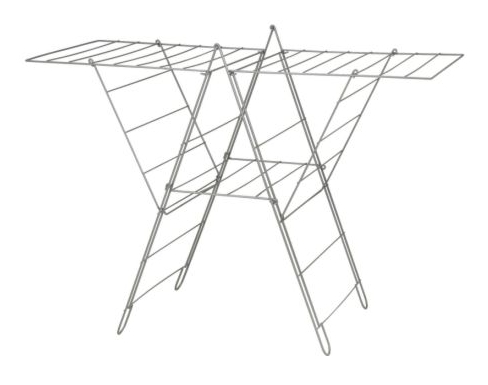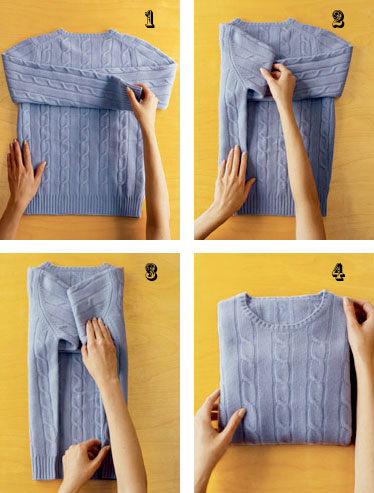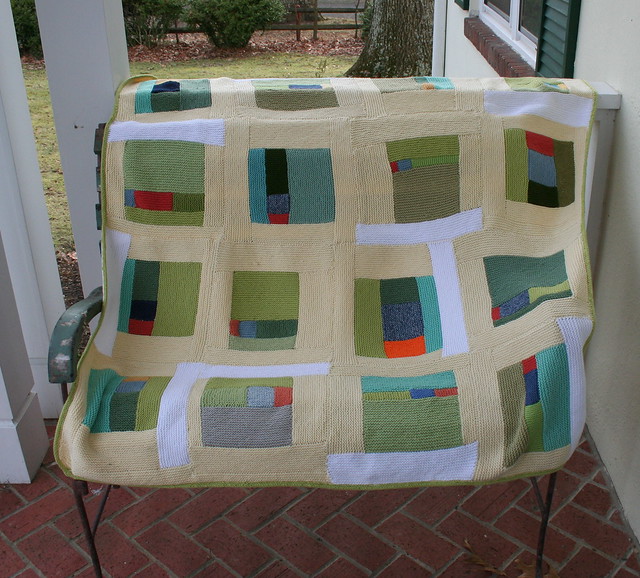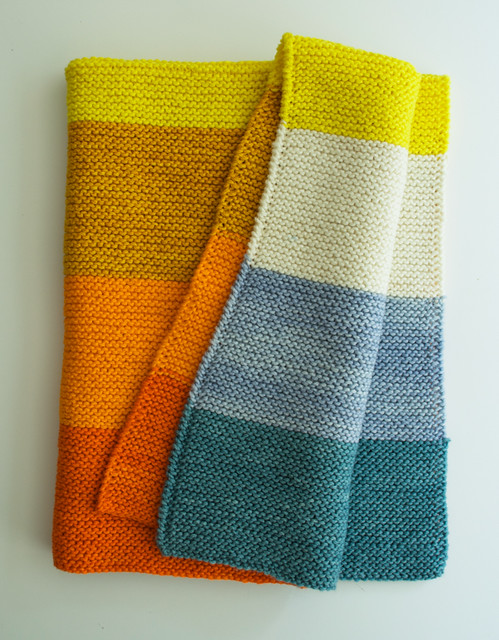Listen to Me Now, Believe Me Later
The biggest mistake people make is putting their sweaters away for storage without cleaning them first. Body oil, dirt, and food provide a veritable shmorgasbord for moths.
1. Round Up the Usual Suspects
Everyone remembers to store the sweaters, but unfortunately the step-children are often left behind. Don’t forget your wool socks, hats, mitts, gloves, scarves, cowls, and other sundry accessories. Don’t forget blankets and anything felted - the bugs especially love the felties.
2. Inspection!
Take a close look to see if your knits need any repairs. Look for little white bits of fluff that look like a long grain of rice, or small deposits of granules that feel like sand. If you have either of these, I regret to inform you that you’ve got bugs. Pick off the offending bits outside, put the victim in a bag and leave it in the freezer for a week to make sure any residual eggs are good and dead. With needle and contrasting thread, gently sew up any holes (you can take this out later and fix it properly). Wash (see next section).
Do not wash sweaters with moth holes without sewing them up. The holes will stretch and get bigger and less fixable.

3. Lather Up
Hand wash in cold water with a delicate wash that does not need to be rinsed, like Eucalan or SoakWash (read the instructions on the botttle). Eucalan is great for animal fibres, it has a little bit more lanolin than Soak and comes in a series of natural scents like lavender, grapefruit, eucalyptus, jasmine, or unscented. Soak is a bit lighter (it’s great for lingerie) and comes in an assortment of blended, exotic scents (Aquae, Celebration, Lacey), as well as unscented. I suggest you let your nose choose, both Eucalan and Soak will get your knits clean and ready for hibernation, and both are made in Canada by really nice people.
After washing, gently squeeze out the excess water - never wring! Wrap knits in a towel and gently squish out the excess water (I like to step on it and give it a ‘massage’). Any kind of towel will do, but microfiber towels are especially useful, since they can absorb a ton of water and dry quickly.

If you don’t have a wash tub at your disposal, Soak makes excellent plastic wash basins in 2 sizes (affectionately named Carrie & Phil) that are great for year round laundrification.
If hand washing is not feasible for large blankets, you may have to b
oogey on down to the laundromat. W
ash blankets individually in a large-ish front loading washing machine on the delicate setting with Eucalan or Soak. Don't use a top-loader, it won't end well - you need to avoid abrasion as much as possible.

4. Dry ‘Em
Lay your knits flat on a dry towel or drying rack. Flip the sweater to make sure both sides dry, and make sure your knits are completely dry before putting them away, you do not want them to mildew (ew!).

5. Fold ‘Em
Try to fold your knits as little as possible to avoid creases when you break them out next fall. This especially goes for finer knits, like machine made cashmeres. Lay the sweater on a flat surface with the front down, fold the arms in at the shoulder seam, and bring the bottom up, folding the sweater in half with the arms tucked in.

Knits need to breathe, so skip the vacuum storage bags which can trap moisture. I prefer a plastic zipper storage bag with breathable cloth sides (you can buy them from us in store of HERE). The nylon zippered under-bed storage bags are ok, or you can also stash them in a zippered cotton pillow case. Those big Rubbermaid storage tubs are not impervious to pests, so if your winter knits are going into storage in one, make sure they go into a storage bag first.
The small zipper bags (see picture above) are great for a single sweater! Consider storing your sweaters in singles - in the fall, when you break out your knits, you only need to expose the ones you are currently wearing to the elements. Additionally, if one of your sweaters has a little moth colony, keeping them all quarantined can prevent an infestation from spreading to all your knits.
Addenda April 3, 2014
Dollarama stores in Toronto now carry Extra Large Zipper Seal Storage Bags (3cm x 39.6cm, find them with the other plastic bags and food wrap) which are perfect for a single sweater: 6 bags for $1.25!
7. Additives?
Please do not add moth balls to your storage bags. Besides smelling awful, the chemicals are terrible for you. I’ve never been impressed with cedar balls, there’s rarely enough of the cedar oil left in the wood to chase off the buggies. If you want to add a little scent to your arsenal, try a sachet of natural lavender (you can knit the sachet pouches or buy them at a dollar store). No lavender plants blooming around your house? You could also try rosemary springs, look in the vegetable section of your grocery store. You can also try some heavily scented soap, like Lush. I cut it up into little pieces, tie the pieces into little bits of old panty-hose, and spread them liberally around inside the bags.
Addenda May 4, 2013: Catherine Schaus says she uses bags of lavender tea as a sachet. Great idea Catherine!
8. Rome Wasn’t Built in a Day
Unless you only have a handful of knits or limitless amounts of drying space, you aren’t going to get this chore done in a day. Wash one or 2 sweaters every other day (my drying rack holds two) and stow them away as you go. In a few weeks you’ll be done and your knits will be safe. You might want to start the process in April with your thick knits (oops, too late this time round, I’ll try harder next year), and move progressively to the lighter knits as you move into May.
9. Don’t Forget Your Stash!
You yarn needs TLC too. It probably doesn’t need to be washed, but a little inspection can’t hurt, and it definitely needs to be bagged. Animal fibres hold humidity, so stowing the woolens will make your summer hydro bill a little less painful. But more important, the humidity has a deleterious effect on the fibres, they become less resilient, and feltable yarns will lose their feltifying properties.
Addenda: September 9, 2013
I am sooooooooo glad I packed away my winter knits last spring!
1. I was rooting through a basket in my bedroom today and found a small selection of woollens that didn't make it through the big wash 'n store process. I laid them out on my bed to fold & put away, and what should I find on my bedspread after? A tiny little worm! That's right, it was a pre-moth. Hopefully no damage was done, but at least I have proof that all my washing and bagging efforts were not in vain.
2. I went to get out my first sweater of the season, and it was easy to find, I didn't have to take out my other sweaters, and it was in great condition. Yay!
3. I'm hoping that by the end of the season the items still in bags will give me some indication of which garments didn't get work, making it a little easier to purge the unused.













































